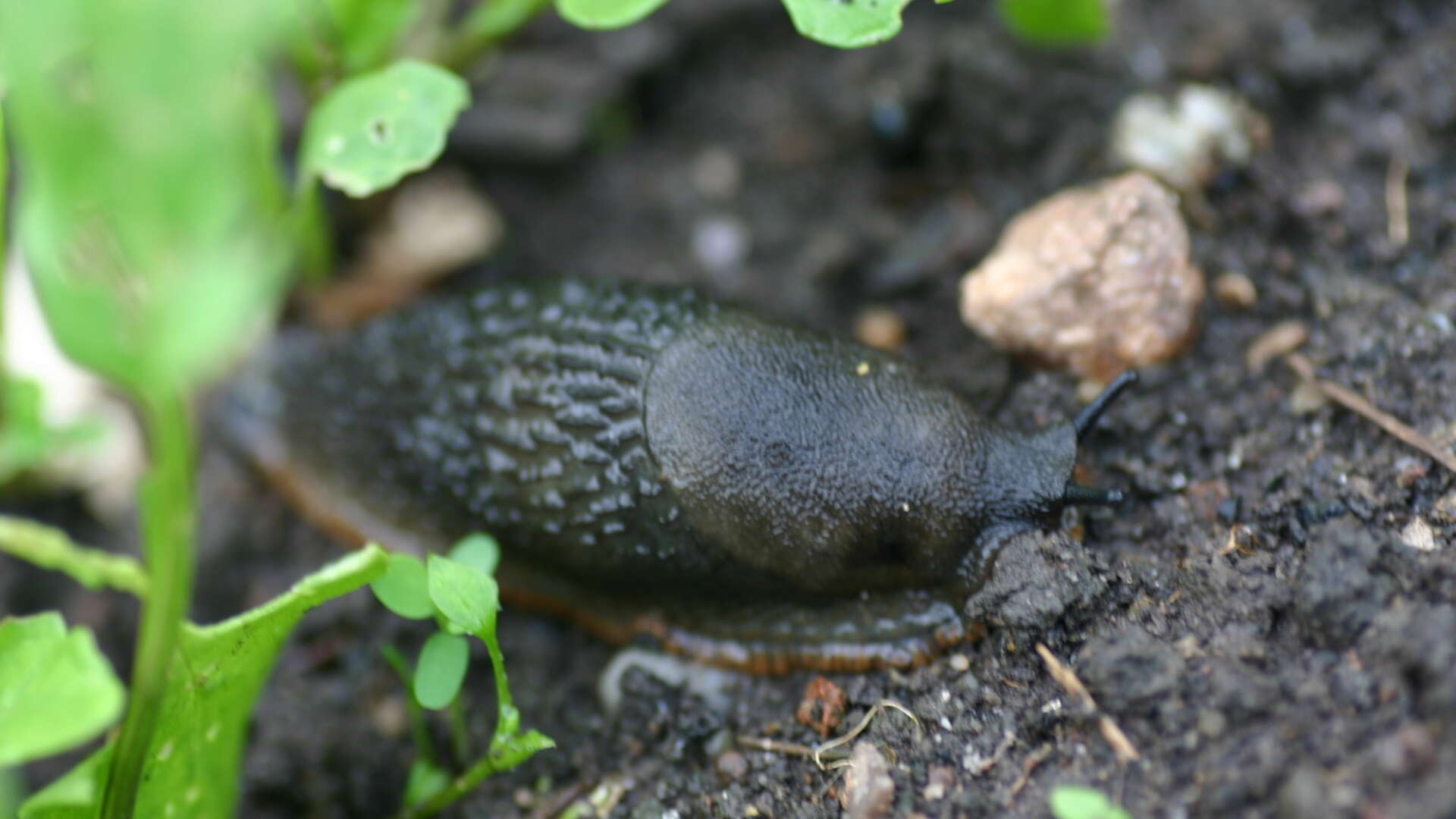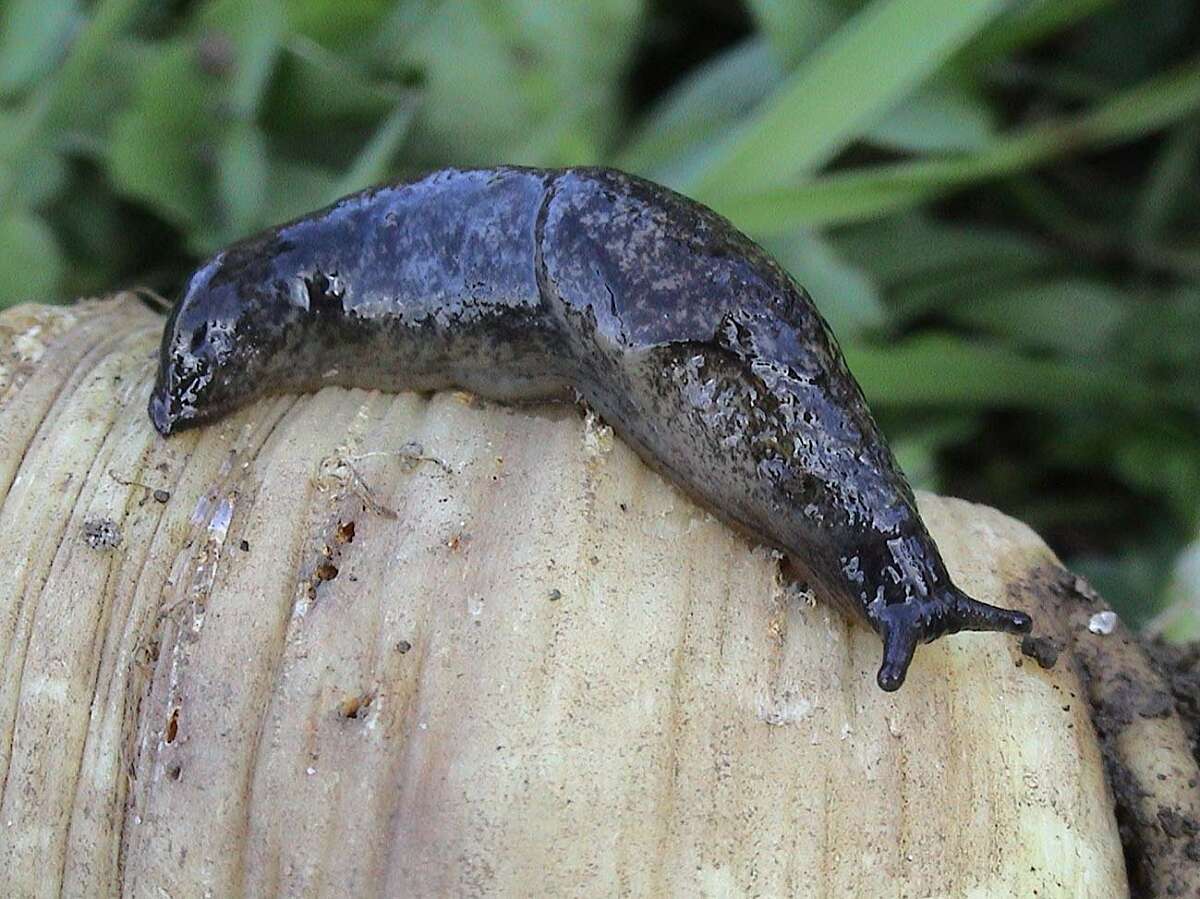Pests and diseases
Slugs and snails
Gardening with slugs and snails 🔗
Slugs and snails are often regarded as the scourge of the seedbed but they do some valuable jobs in the garden. They help to break down plant matter, disperse seeds and provide food for lots of other beneficial creatures.
But when numbers become problematic, here's a few ways to deal with them...
- Protect your plants. Create barriers with slug collars, grit, wool pellets, and cloches made from plastic bottles. Keep checking daily – especially after wet or damp weather. Read more below.
- Collect slugs and snails. Put down a flat slate on the soil near your plants and check underneath it every day to remove the slugs and snails which have congregated in the dark and damp. Dispose of them in a suitable natural habitat away from any cultivated land.
- Use bio-controls i.e nematodes. These can be successful but are expensive to buy, so make sure you carefully follow the instructions regarding soil temperature and watering to ensure success. Read more below.
- Choose trouble-free plants. Slugs and snails love hostas and delphiniums but tend to dislike plants such as foxglove or pungent fennel. See below for a list of plants that are not so high on their menu.
- Wait to plant out seedlings. Slugs love young green growth, so wait until your young plants are more mature - with six to eight leaves - before planting out. It’s at this stage the leaves produce lignin and become a bit too coarse for the slug palate..
- Choose slug-resistant varieties. Potato varieties such as Ambo, Cara, Desiree, Romano, Sante and Valor have shown resistance to slugs.
- Get the balance right. Attract ground beetles, frogs, toads and birds to your garden, as they all feed on slugs. Make your garden a wildlife-friendly place by avoiding harmful sprays and creating a variety of wildlife habitats and nesting boxes. Consider adding a pond to encourage frogs, as this will definitely make a difference to keel slug populations.
- Remove slug homes. Practice good hygiene and remove piles of stones, old flower pots, plant debris and tarpaulin are moved away from cultivated areas. These can all be hiding places for slugs and snails.
If you'd like more information about slugs - and other organic gardening tips - straight to your inbox, as well as access to member-only factsheets and a dedicated enquiry line: why not join us and support our charity.

Barriers and traps 🔗
Here are some useful ways to deter slugs and snails. None of them are failsafe, but they can act as a deterrent, along with other measures...
- Bottle cloches - cut the bottom off a clear plastic bottle and firm it into the soil around a vulnerable seedling/plant.
- Grit or granules - these natural mineral products form a sharp, gritty repellent barrier or suck the moisture from the slime that slugs and snails exude as they move.
- Bran, oats or coffee grounds. Put a thick layer around the plant, slugs will eat it, swell up and become easy picking for birds. But you need to renew daily, especially in damp weather.
- Spray repellent - made from yucca plant extract, spray onto surfaces and around vulnerable plants. Especially useful in hard-to-protect-places like greenhouse window frames. Needs renewing after heavy rain.
- Copper tape/rings - copper gives a natural electric charge that repels both slugs and snails. Tape is useful around pots and legs of greenhouse staging.
Biological controls 🔗
Nematodes. There is a microscopic nematode, Phasmarhabditis hermaphrodita, which kills slugs - particularly small, soil-dwelling ones - but not snails. It is a native species and can be found naturally in the soil throughout the UK.
For it to be effective, however, you need large numbers and timing is vital. We recommend two applications in spring and late summer. Slugs will be controlled for up to six weeks, but there is little point in doing more than two applications as they will not be effective.
You can buy nematodes online. They're often supplied in a pack of moist clay; this is mixed with water and applied to the soil with a watering can.
Important points for success with nematode controls:
- The soil should be moist for two to three weeks after application to enable the nematodes to live. During dry spells watering may be necessary.
- The soil temperature should be above 5°C. If you live in the south, this is probably between March and October. Further north, your window is more limited. In a greenhouse, use it whenever slugs are active.
- Once opened, the contents must be used immediately. Unopened, the sachet may be stored in a fridge for four weeks or in a cool, dark place for two days.
Slug pellets 🔗
We would advise gardeners NEVER to use slug pellets containing metaldehyde (which has been banned) or methiocarb, but also to avoid organic versions.
So-called organic slug pellets are ferric phosphate-based, which affects the calcium metabolism in the gut system of snails and slugs - causing them to stop feeding and die within three to six days.
Although ferric phosphate is less toxic than metaldehyde (used in other pellets), there remains the problem of the other ingredients in the tablets - known as chelators. These chemicals help bond the iron molecules and make them more toxic to the molluscs. Unfortunately, they also affect earthworms, and, if consumed in large quantities, can poison pets.
Plant choice 🔗
Gastropods show little or no interest in the following plants...
Acanthus, Achillea, Agapanthus, Alchemilla mollis, Antirrhinum, Aquilegia, Astrantia, Bergenia, Corydalis, Cynara, Dicentra, Digitalis (Foxglove), Eryngium, Euphorbia, Fennel, Forget me not, Fuchsia, Gallardia, Hardy Geranium, Geum, Hemerocallis, Japanese anemone, Lysimachia, Nasturtium, Nepeta, Pelargonium, Phlox, Polygonum, Potentilla, Pulmonaria, Oriental poppy, Rudbeckia, Sedum, Sempervivum, Thalictrum, Verbascum.

Slug species 🔗
There are 40 common species of slug found in gardens, most of which are harmless. However, there are four species that may harm your plants:
- The Netted or Grey Field Slug (Deroceras reticulatum), 3-5 cm long, is normally a light brown above, with a chain of darker veins and blotches, and pale with a darker central zone below. It's a pest in gardens as it feeds nearly all year round, mostly on seeds and plants above ground.
- The Common Garden Slug (Arion distinctus/ Arion hortensis), 3cm long, is brown and striped lengthwise, often with tiny gold spots, and with an orange or yellow underside. Attacks both leaf and root crops, and is a major pest of potatoes.
- The Common Keeled Slug (Tandonia budapestensis), up to 6cm long, is black or grey with a yellow-orange ridge along its body, a pale underside and colourless mucus. It lives underground, feeding on newly drilled seeds such as potatoes. As it spends most of its time underground it is hard to control.
- The Large Red slug and Black Slug (Arion ater) are either orange-red or black with an orange fringe. Despite its size, of up to 12cm, this species of the slug is much less damaging than the other pest species. When alarmed, it contracts into a spherical shape and might rock from side-to-side.
Slugs facts 🔗
Garden snails (Cornu aspersum) are usually dark or golden brown, or chestnut with yellow stripes. The body is soft, slimy and brownish-grey. As it moves, it secretes mucus, which helps it glide across a surface by rhythmic waves of contraction. The snail moves at a top speed of .012 metres per second (compare this with Usain Bolt who runs a thousand times faster, at 12 mts per second.) However, unlike Bolt, the snail is helped by its mucus to go up a slope at any angle, including upside down; it can resist being pulled off a firm surface with an adhesive strength several times its own weight. It rests on a surface at any angle without any expenditure of energy, and it can pass over the edge of a razor blade without harm.
Snails are herbivores, eating vegetables, fruit, flowers and cereals, as well as rotting plant material. When injured the animal produces a defensive froth of mucus to repel enemies such as aggressive small ants. When it's freezing, the snail alters its blood structure to prevent the formation of ice in its tissues. In dry weather, it seals the shell opening with a thin membrane of dried mucus. This helps retain moisture and protects it from insects.
The snail's head has four tentacles; the upper two have eye-like light sensors, and the lower two are tactile and used for smelling.
How do snails reproduce? Snails are hermaphrodite and take up to two hours to mate. They lay a batch of about 80 spherical pearly-white eggs into crevices in the topsoil or sheltered under stones. In a year it may lay six batches or so. That's nearly 500 young snails, which will take one or two years to reach maturity.
Slugs use their mucus as a navigation system, as it helps them follow the trail back to their tunnels and feeding sites.
The slug's mantle is an area behind the head and is made of thick flesh. If a slug is frightened or not active it will retract its head into the mantle for protection. The keel is a ridge that runs the length of the back of some species of slug.
Slugs live in dark damp places or underground. They need persistent moisture to prevent drying out. Cool weather, rain and fog are perfect for slugs. However, in a long dry spell, slugs can encase themselves in a papery cocoon-like structure and attach themselves to a wall or a tree and wait it out.
Most UK slug species are herbivorous, eating leaves, flowers, fruits, mushrooms, lichens and decaying plant material. Some, such as the Leopard slug, are carnivorous and hunt other slugs and snails.
Have we convinced you to love your slugs a little more? Have a listen to our Organic Gardening Podcast about slugs with expert Imogen Cavadino.
Join Garden Organic!
By becoming a Garden Organic member you can join thousands of people who are already leading the movement for an organic and sustainable future for us all. And get great member benefits!
Join today